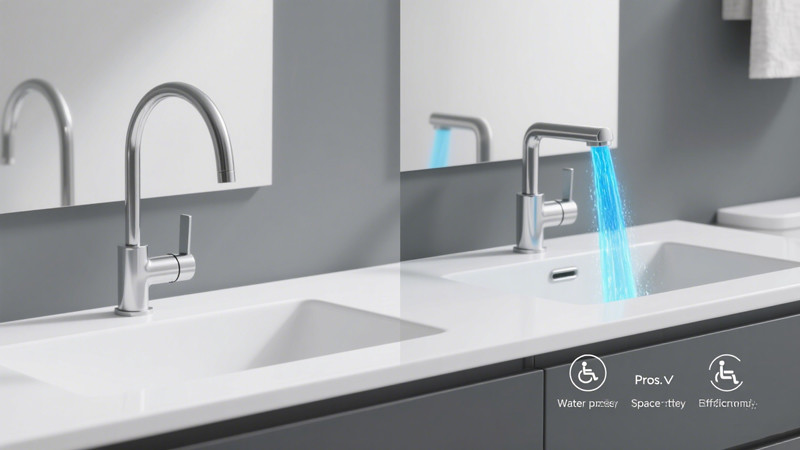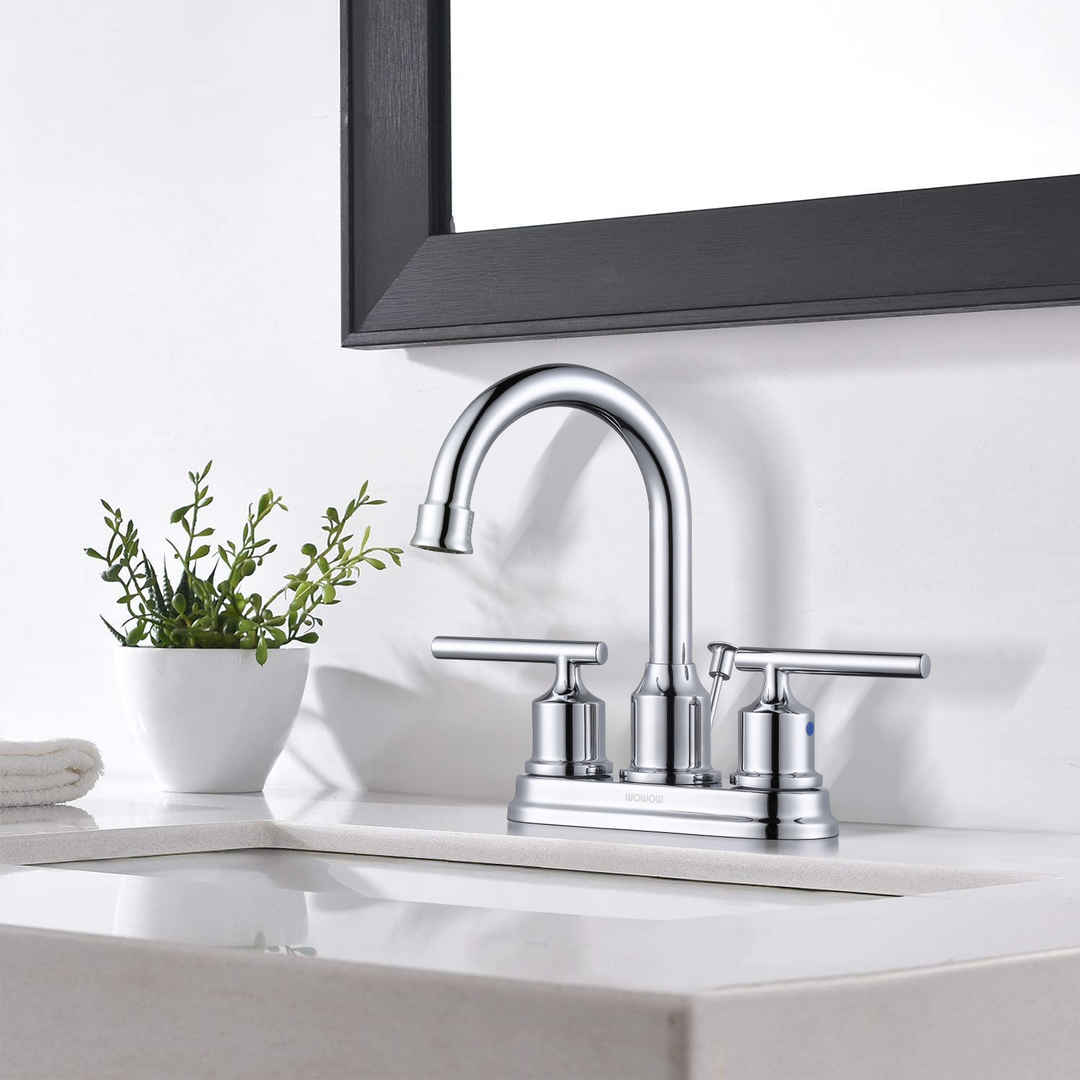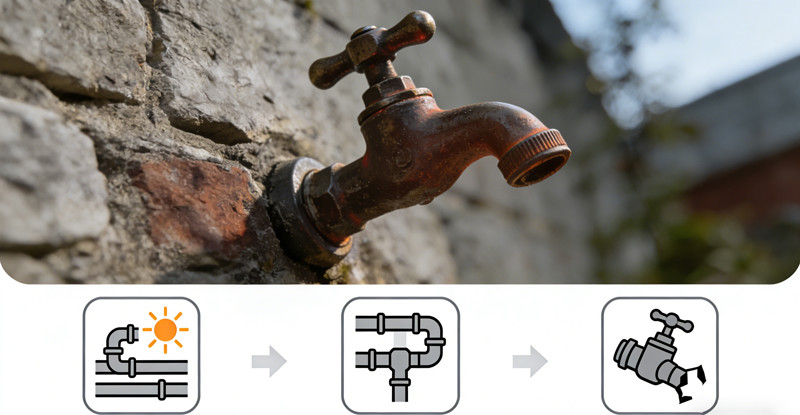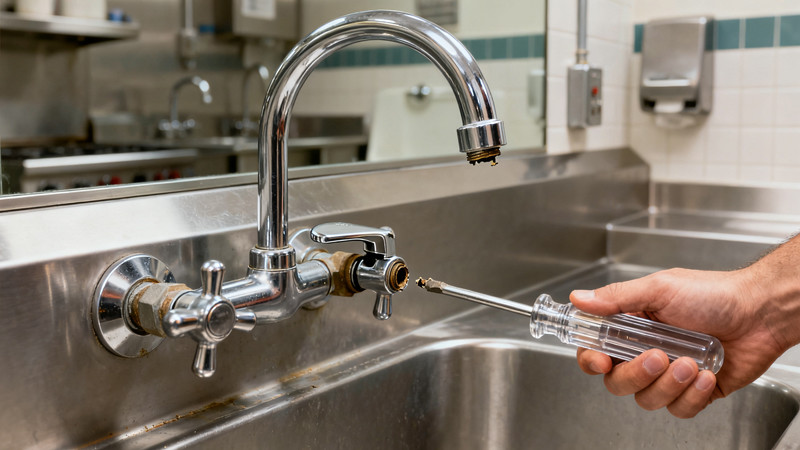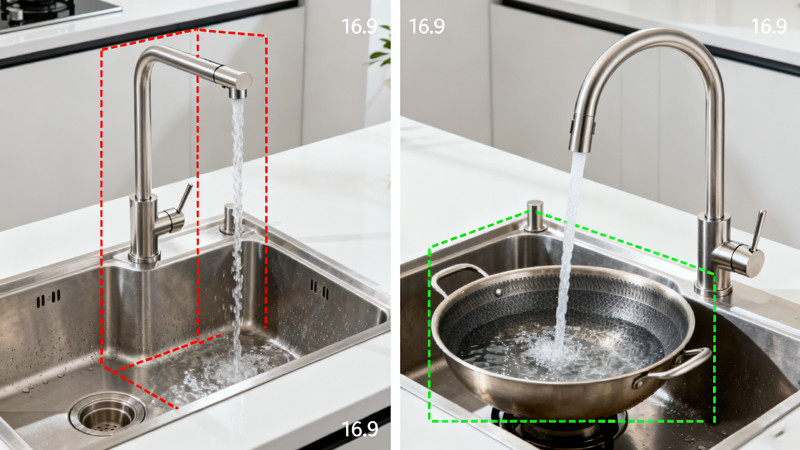An in-depth 900-word guide for homeowners, renovators, and anyone tired of bumping stock-pot handles into an ill-fitting spout.
1. Why “arc height” matters in everyday use
Step into any showroom and you’ll see faucets described as high-arc, medium-arc, or low-arc. “Arc height” is simply the vertical distance from the deck (or wall) to the underside of the spout. Tall faucets—typically 8–10 inches (20–25 cm) or more—create a dramatic look and extra clearance. Short faucets—usually 3–6 inches (8–15 cm)—stay close to the sink rim and keep sightlines uncluttered.
At first glance the choice feels cosmetic, but arc height drives splash control, ergonomics, cleaning routines, and even the longevity of your countertop finish. Evaluating those trade-offs up front can save you the pain of a gorgeous but impractical fixture—or a stubby spout that turns every casserole dish into a wrestling match.
2. Tall faucets: freedom, flexibility, and focal points
Pros
| Advantage | Why it matters |
|---|---|
| Pot-clearance and reach | A tall, high-arc faucet makes it easy to rinse baking sheets, fill stock pots, or scrub dogs and houseplants—no awkward tilting or wrist contortions. |
| Design statement | In open-concept kitchens, the sweeping curve becomes functional sculpture, often echoing pendant lights or vent-hood lines. |
| Pull-down sprayer synergy | Most modern pull-down heads dock neatly in a tall spout, maximizing maneuverability without banging the sink deck. |
| Comfort for tall users | Larger users don’t have to stoop to fit hands or dishes under the water stream. |
Cons
- Splash risk on shallow sinks — A 10-inch spout above a 7-inch-deep bar sink can create geysers. Water hits flatware and ricochets.
- Visual bulk — In small galley kitchens or petite powder rooms, a towering faucet can dwarf cabinetry or mirrors, making the room feel cramped.
- Price premium — Tall models often come with complex internal bracing or magnetic docking systems, adding 10–40 percent to cost.
- Cabinet clearance — If the spout sits too close to an upper shelf or windowsill, full rotation can be blocked.
Best-fit scenarios
- Deep farmhouse or single-bowl sinks (9 inches or deeper)
- Islands where the faucet doubles as a design anchor
- Home chefs who frequently fill pasta pots or use bulky cookware
3. Short faucets: containment, simplicity, and timeless lines
Pros
| Advantage | Why it matters |
|---|---|
| Splash control | Water falls a shorter distance, so it hits closer to the drain and stays inside even a shallow basin. |
| Minimalist profile | Low-arc faucets keep sightlines clear to a statement backsplash or picture window. |
| Lower cost and easier DIY install | Fewer moving parts, lighter weight, and simpler escutcheons mean short faucets are often weekend-warrior friendly. |
| Better for tight spaces | In RVs, boats, basement bars, or under low medicine cabinets, a compact faucet is sometimes the only option. |
Cons
- Limited clearance — Cookie sheets, 32-oz travel tumblers, and watering cans won’t fit underneath without tipping.
- Potential ergonomic strain — Tall users or people with mobility impairments may need to bend or twist wrists, especially if the sink is shallow.
- Less “wow” factor — A low profile recedes into the background, which might underwhelm if the faucet is meant to be the jewelry of the room.
Best-fit scenarios
- Powder rooms where guests primarily wash hands
- Bar and prep sinks where cutting boards or pots aren’t a factor
- Traditional kitchens chasing a vintage bridge-faucet look
- Children’s bathrooms—less leverage for kids to hang on and loosen the mounting
4. How to decide: five practical checkpoints
- Sink depth and geometry
Measure from the drain to the rim. A rule of thumb is arc height ≈ sink depth + 1 inch for comfortable clearance with minimal splash. - Countertop material
Porous stone (marble, soapstone) stains easily from overspray. If you love a waterfall-style high arc but have delicate counters, invest in a deeper sink or a laminar-flow aerator that tamps down turbulence. - Cabinet and window clearances
Swing the spout’s full rotation (often 120–360 degrees) in your mind. Will it smack a windowsill? Does it block a corner cabinet door? - User height and accessibility
For universal design, aim for a lever handle that can be operated with one hand from a seated position. High-arc single-handles often win here, but a low-arc widespread with extended-length levers can work too. - Aesthetic intent
Kitchens with soaring ceilings and oversized pendants welcome a statement faucet. Cozy cottage baths may call for a restrained silhouette.
5. Hybrid solutions and modern innovations
- Semi-professional pull-down faucets bring commercial-kitchen style with 20-inch spring coils, yet many include flow reducers and dual-spray heads to tame splashing.
- Articulating arm faucets (e.g., Kohler Crue) fold flat against the wall for low-profile storage and extend upward only when needed—ideal above shallow apron sinks under windows.
- Rotating spout extensions let a normally low faucet pivot up and out, adding clearance temporarily.
- Integrated filtration or touchless control doesn’t depend on arc height, but tall bodies usually have more room for batteries or LED temperature rings.
6. Cost of ownership beyond purchase price
| Factor | Tall Faucets | Short Faucets |
|---|---|---|
| Average MSRP (mid-tier brands) | $250–$450 | $150–$250 |
| Installation labor | Slightly higher—heavier units may need an extra mounting bracket | Lower—lighter and simpler |
| Replacement parts | Pull-down spray heads and magnetic docks add $30–$70 over time | Basic aerators and cartridges $10–$25 |
| Water use | Same flow-rate caps (1.5–2.2 gpm), but splashing can indirectly waste water | Typically less splash loss |
Long-term, the maintenance delta isn’t huge. What matters more is using the faucet as intended. If a low spout forces you to rinse stock pots in the bathtub, hidden costs appear quickly.
7. Verdict: choose function first, drama second
- Go tall if you cook large meals, have a deep sink, or want a sculptural centerpiece that doubles as a conversation starter.
- Stay short if space is tight, your sink is shallow, or you value a quiet, low-maintenance workhorse that stays out of photos.
When in doubt, tape a string to a chopstick at the proposed arc height and test daily tasks for a few days. The splashes, bumps, or lack thereof will tell you everything marketing copy can’t.
8. Final takeaway
Both tall and short faucets can “work best”—for the right sink, room, and lifestyle. Treat arc height as a functional tool, not just a styling flourish. Match the faucet’s clearance, splash footprint, and visual weight to the real-world chores and spatial constraints of your kitchen or bath. Get that right, and every hand-wash, pasta fill, and puppy bath becomes easier—no matter how tall (or short) the faucet stands.
 WOWOW Faucets
WOWOW Faucets